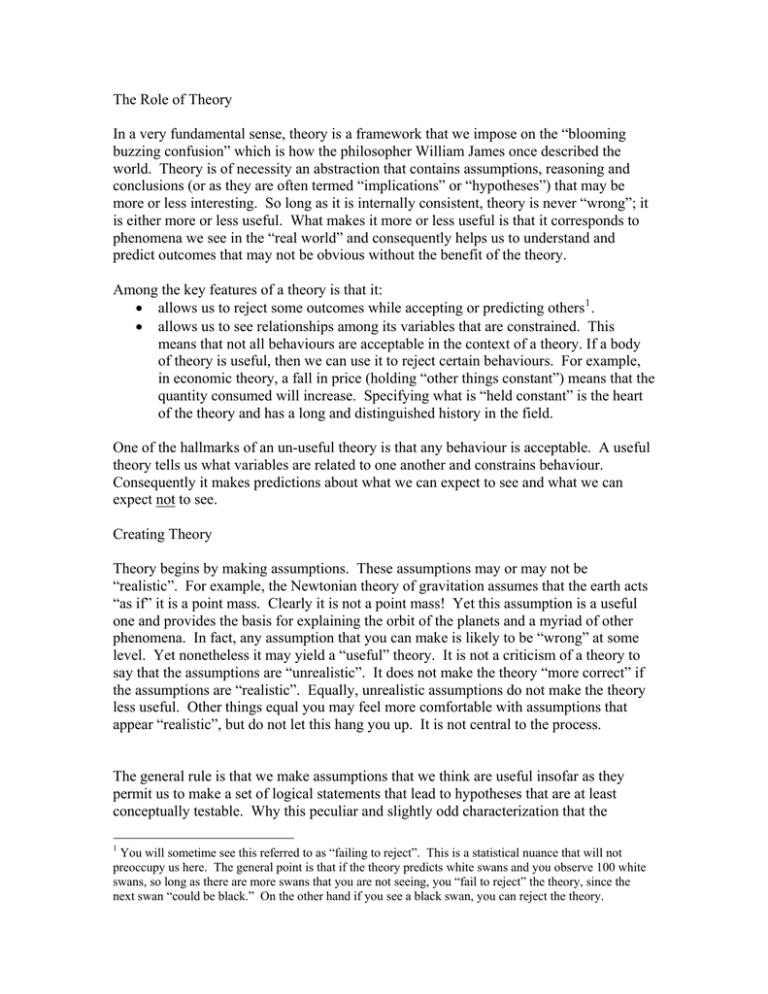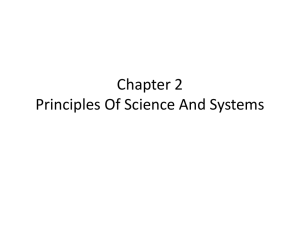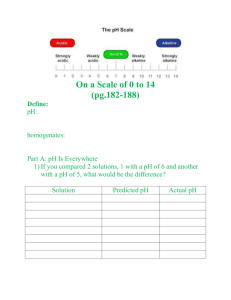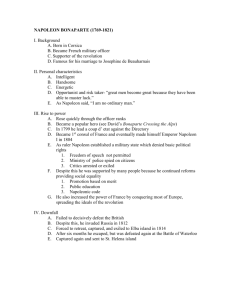The Role of Theory
advertisement

The Role of Theory In a very fundamental sense, theory is a framework that we impose on the “blooming buzzing confusion” which is how the philosopher William James once described the world. Theory is of necessity an abstraction that contains assumptions, reasoning and conclusions (or as they are often termed “implications” or “hypotheses”) that may be more or less interesting. So long as it is internally consistent, theory is never “wrong”; it is either more or less useful. What makes it more or less useful is that it corresponds to phenomena we see in the “real world” and consequently helps us to understand and predict outcomes that may not be obvious without the benefit of the theory. Among the key features of a theory is that it: • allows us to reject some outcomes while accepting or predicting others 1 . • allows us to see relationships among its variables that are constrained. This means that not all behaviours are acceptable in the context of a theory. If a body of theory is useful, then we can use it to reject certain behaviours. For example, in economic theory, a fall in price (holding “other things constant”) means that the quantity consumed will increase. Specifying what is “held constant” is the heart of the theory and has a long and distinguished history in the field. One of the hallmarks of an un-useful theory is that any behaviour is acceptable. A useful theory tells us what variables are related to one another and constrains behaviour. Consequently it makes predictions about what we can expect to see and what we can expect not to see. Creating Theory Theory begins by making assumptions. These assumptions may or may not be “realistic”. For example, the Newtonian theory of gravitation assumes that the earth acts “as if” it is a point mass. Clearly it is not a point mass! Yet this assumption is a useful one and provides the basis for explaining the orbit of the planets and a myriad of other phenomena. In fact, any assumption that you can make is likely to be “wrong” at some level. Yet nonetheless it may yield a “useful” theory. It is not a criticism of a theory to say that the assumptions are “unrealistic”. It does not make the theory “more correct” if the assumptions are “realistic”. Equally, unrealistic assumptions do not make the theory less useful. Other things equal you may feel more comfortable with assumptions that appear “realistic”, but do not let this hang you up. It is not central to the process. The general rule is that we make assumptions that we think are useful insofar as they permit us to make a set of logical statements that lead to hypotheses that are at least conceptually testable. Why this peculiar and slightly odd characterization that the 1 You will sometime see this referred to as “failing to reject”. This is a statistical nuance that will not preoccupy us here. The general point is that if the theory predicts white swans and you observe 100 white swans, so long as there are more swans that you are not seeing, you “fail to reject” the theory, since the next swan “could be black.” On the other hand if you see a black swan, you can reject the theory. hypotheses or predictions are “conceptually” testable? Well, for one thing, you may not have the right data yet. You may have a theory that makes a prediction that cannot be observed. For example, the world will end in 2525. It is a prediction, but we have a while to wait before we can say for sure that it is useful theory or not. (It could end before and help us out some, although in this case, only a theorist will be happy I suspect.) This is still a prediction that is observable so the theory in principle is useful. 2 What about a prediction that is not useful. I have a theory that tells me there is a blue gremlin behind the backboard. However, the only characteristic of the gremlin is when I remove the blackboard, the gremlin disappears. This is not a useful theory. It is in principle, not testable since the only test denies the possibility of observing the only data that would permit it to be falsified. You say this is strange and nobody thinks like this. Maybe so, but on the other hand, there are lots of very bright people who work their magic and we find when we chase down their “theory”, the approach itself denies the ability to falsify the theory. You will be surprised to find that many people contort themselves into believing an identity is a theory! That is, they construct an approach that turns out to have an outcome that is predicted, and it is true because it has to be true. The key is that the prediction has to be testable in principle and consequently at least in principle observed to be false or consistent with the evidence. Let me illustrate this point with the following example. Can history be theory? After all, history is what it is. Events happen and we describe them. Can this be theory? The statement that “Napoleon was a great man” I would argue is a statement that embodies theory, not simply description. But it is an implicit theory. It is that the world would have been substantially different without Napoleon. That is, take Napoleon out of the world and a large number of historical events would have been a lot different. How we go about constructing that theory is a important exercise, and there might be debates, but I imagine just about everyone who reads serious historical accounts of the period would recognize that historians have theories about how the world would have been had Napoleon acted differently and the ways in which his actions affected millions of people. There is theory. Historians have a view about how the world was, how Napoleon was, and the consequences. It is not necessarily even an explicit theory, but it is there nonetheless, lurking in the background. The nice thing about social science is that it tries to make more of the implicit background more explicit. It emphasizes the structure that we assume and take for granted, and in doing so highlights the features we think of as important. 2 Although drawn from another field, right now physics is stretching itself to try to find a way to test the “string theory” approach to the cosmos. There is about 25 years worth of theory that is “beautiful” but nobody has yet to be able to find a way to test it. Hundreds of physicists have worked on it, but all their efforts will turn to dust unless they can find a real world prediction that generates an outcome that is testable (and hopefully different from the “standard” theory.) So how do we go about constructing a theory? It is not necessarily a grandiose exercise. We do it all the time without realizing it. Whenever we organize information, we necessarily impose a view on that information. That really is a kind of theory. Much of what we want to talk about naturally drives us to theory, but we do not necessarily recognize it as such. An important part of social science is recognizing that what it is we are doing is really imposing implicit theory and then making that theory explicit. In your essays you will be asked to make explicit, or at least to show that you are aware of your assumptions. You will consequently become more aware of the steps that lead you to your conclusions, your logic, and finally, how your conclusions match-up with the “real world”. Since assumptions are inherently “unrealistic”, how do we discriminate among theories that are useful from those that are not useful? 3 The way we do this is by confronting the theory with data. How we organize data is an essential feature of the social science exercise. It is with this in mind that we now turn to discussing ways in which we organize our data with which we propose to confront our theory. Homework Let us now turn back to your introductions. What are the questions that you are posing? What are some of the ways in which you intend to answer these questions? This is where you begin to construct your “theory”. Let each of you take the question that you are talking about and let us talk about how you plan to answer that question. This is where the rubber hits the road. It is the process that turns your question into a useful framework for analysis. 3 The Nobel Prize winning economist George Stigler made the point in the following way: “What,” he asked, “is the difference between theory and flipping a coin?” His answer: “Flipping a coin uses real resources” The point of his quip is that there can be many theories that purport to explain things. Theories are figments of our imagination.




